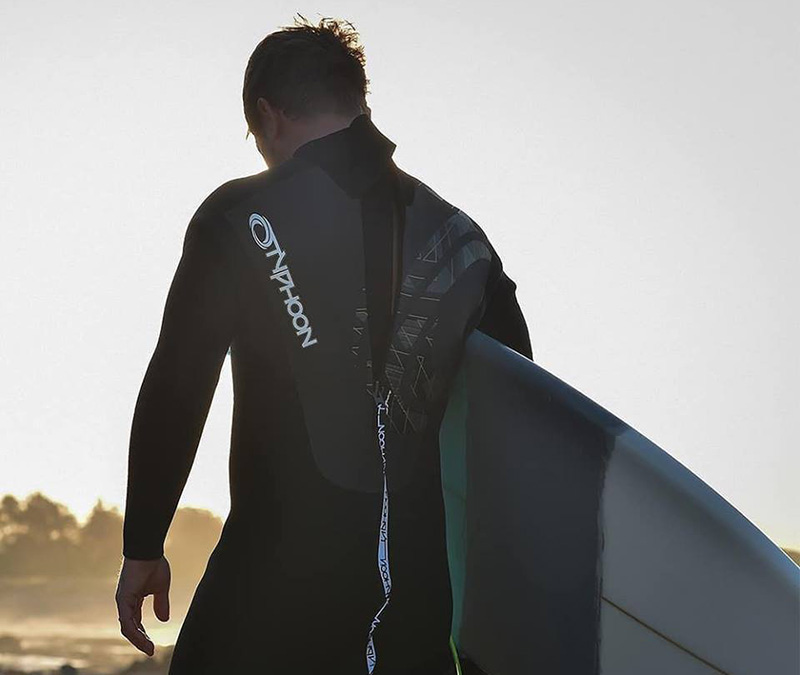Get Thick
It is Ireland. The water is rarely warm. Choose a wet suit with the magic of neoprene for the chilly Atlantic waves and the icy sting of the Irish Sea. Neoprene has proven itself as maintaining great flexibility under all temperatures. It is the best option for a good wet suit. Before purchasing a wet suit, consider the thickness of the neoprene and the protection it gives. The thickness of a wetsuit starts at 2mm and goes up to a chunky 6mm of protection. Don’t think that a denser suit will restrict your movements. Designs have improved greatly over the past years and a 6mm wet suit will not impeded your amazing surfing/diving/generally awesome skills in any way. The wet suit will be thickest around your torso, and then the legs and then the arms. This is cleverly designed to give optimum warmth to your core. It also makes life easier for wild water swimmers, kayakers and other water sport enthusiasts as the arms keep working, the core is protected. If you are still wondering just how thick you need to be, from a wet suit perspective, then let one our trained staff at Outdoor Adventure Store talk you through the options. Obviously, if you are navigating giant waves in the North Sea on a chilly November morning, you should opt for the heaviest density of 6mm. If you really don’t take your clothes off for anything less than 21 degrees of rare Irish sunshine, you will be grand with the 3mm. In fact, 3mm is the most popular wet suit as it covers most options for Irish water sports.
A Good Fit
Make sure your wetsuit is a nice snug fit. Chafing is a real problem with ill-fitting wet suits and while the suit should not be cutting off circulation or causing pain, it is normal for this piece of clothing to be the tightest thing you have ever put on. Keep in mind that neoprene stretches when wet and with usage, so If you’re in doubt about the correct size – choose the snugger fit. Trust us. It will feel weird at first, particularly as you pull it over the legs and thighs. But, you do not want to be slowed down in the water by folds or air pockets so bear with it. If a wetsuit wasn’t snug, it would not do its’ job of keeping you warm and improving your buoyancy. The very purpose of the suit is to keep a very thin layer of water next to your body. That means that the wetsuit is going to feel very tight, but comfy and touching your skin in the small of the back, backs of the knees etc.
Style.
Wet suits tend to come in the amazing colour range of black, with interesting shades of grey. No one complains about this lack of colour as style in wet suits is really more about the cut and the placement of the zipper. The style depends on personal preference. Do you prefer a full-sleeved or sleeveless version? A Steamer, a Shortie or a Long John. There are pros and cons to each, but a Steamer, or longer-sleeved wet-suit, gives more buoyancy and warmth, while the sleeveless versions (a Long John) can be nice for those who don’t like their shoulder range-of-motion restricted, and is particularly used for sailing. The Steamer design is the most common suit and the one you’ll spend most of your surfing life wearing. Examine the zip before you buy. Back zips run along the spine, making a big opening and so, they are the easiest type to get on. At Outdoor Adventure Store we stock Typhoon brand, which feature the Storm Keeper Zip, a specialist zip featuring offset teeth that forms a minimum water penetration. The zip can often see water penetration, but this is greatly reduced when you choose a well-made brand. Some choose front opening zips, but again it is entirely a personal choice.
Accessories
Gloves, hoods and booties are essential extras which water sport enthusiasts usually add to their kit once they have begun the activities in earnest. The addition of a good neoprene super-stretch hood with a snug face seal can make facing the winter white water rapids in your kayak a much more pleasant experience. If you are a hardy wild water swimmer, then you need to have that protection from the brain numbing chills! Booties not only protect you from the cold, they stop rocks and reefs from damaging your feet. Your feet will stay warm for a longer time. Your hands will be warmer with the addition of gloves, although generally speaking they provide protection from the air and wind chill and not just the water, particularly if you are surfing or canoeing. Good accessories and the secret to all weather participation in your favourite water activities from surfing to snorkelling, and just as it is important to buy the right wet suit, you should pick reliable brands in accessories, that will last the test of time and the rigours of your crazy water filled adventures. See our Wet-suit accessories here


1 thought on “What you need to know before buying a Wet Suit”